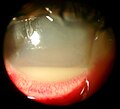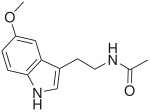Exogenous bacteria are microorganisms introduced to closed biological systems from the external world.[citation needed] They exist in aquatic and terrestrial...
11 KB (1,038 words) - 19:52, 17 July 2024
mutation rate. Some bacteria transfer genetic material between cells. This can occur in three main ways. First, bacteria can take up exogenous DNA from their...
143 KB (15,531 words) - 19:34, 31 July 2024
gram-positive bacteria are bacteria that give a positive result in the Gram stain test, which is traditionally used to quickly classify bacteria into two broad...
24 KB (2,648 words) - 14:57, 23 July 2024
Gram-negative bacteria are bacteria that unlike gram-positive bacteria do not retain the crystal violet stain used in the Gram staining method of bacterial...
24 KB (2,445 words) - 17:36, 19 July 2024
cell's genome. Repeated experiments proved exogenous DNA integration was possible in other species of bacteria, prompting studies to extend to mammal cells...
14 KB (1,552 words) - 04:52, 10 May 2024
Pathogenic bacteria are bacteria that can cause disease. This article focuses on the bacteria that are pathogenic to humans. Most species of bacteria are harmless...
79 KB (4,101 words) - 10:40, 13 April 2024
Human microbiome (redirect from Bacteria and human health)
conjunctiva, and the biliary tract. Types of human microbiota include bacteria, archaea, fungi, protists, and viruses. Though micro-animals can also live...
105 KB (11,667 words) - 23:41, 1 August 2024
Antigen (redirect from Exogenous antigen)
transfused blood cells. Antigens can be classified according to their source. Exogenous antigens are antigens that have entered the body from the outside, for...
20 KB (2,435 words) - 23:07, 19 August 2024
Genetic transformation (redirect from Transformation (bacteria))
alteration of a cell resulting from the direct uptake and incorporation of exogenous genetic material from its surroundings through the cell membrane(s). For...
54 KB (6,777 words) - 01:56, 22 June 2024
loss of the eye itself. Infection can be caused by bacteria or fungi, and is classified as exogenous (infection introduced by direct inoculation as in...
15 KB (1,622 words) - 15:36, 29 May 2024
Cyanobacteria (redirect from Blue-green bacteria)
uptake and incorporation of exogenous DNA from its surroundings. For bacterial transformation to take place, the recipient bacteria must be in a state of competence...
179 KB (17,664 words) - 18:55, 8 July 2024
Sexual reproduction (section Bacteria and archaea)
unicellular organisms without cell nuclei, such as bacteria and archaea. However, some processes in bacteria, including bacterial conjugation, transformation...
39 KB (4,860 words) - 02:34, 21 August 2024
Transformation, the uptake of exogenous DNA from the surrounding environment. Transduction, the virus-mediated transfer of DNA between bacteria. Conjugation, the...
12 KB (1,283 words) - 02:59, 29 January 2024
Streptococcus mitis (category Gram-positive bacteria)
able to take up exogenous DNA and incorporate exogenous sequence information into their genome by homologous recombination. These bacteria can employ a predatory...
6 KB (551 words) - 03:52, 23 October 2023
exogenously spoiled by bacteria or fungi after the death of the animal. One source of infectious organisms is bacteraemia, the presence of bacteria in...
5 KB (574 words) - 18:22, 26 May 2024
Obesity (redirect from Exogenous obesity)
Obesity is a medical condition, sometimes considered a disease, in which excess body fat has accumulated to such an extent that it can potentially have...
175 KB (18,752 words) - 05:04, 2 August 2024
Lactobacillus (category Gut flora bacteria)
aerotolerant anaerobes or microaerophilic, rod-shaped, non-spore-forming bacteria. Until 2020, the genus Lactobacillus comprised over 260 phylogenetically...
72 KB (4,171 words) - 06:21, 5 August 2024
Lipopolysaccharide (section Functions in bacteria)
components of the outermost membrane of cell envelope of Gram-negative bacteria, such as E. coli and Salmonella. with a common structural architecture...
63 KB (7,188 words) - 10:03, 16 July 2024
defending against exogenous factors. These include a wide variety of different toxins, viruses, intra- and extracellular bacteria, protozoa, helminths...
14 KB (1,834 words) - 12:56, 3 May 2024
Prebiotic (nutrition) (section Exogenous)
food that foster growth or activity of beneficial microorganisms such as bacteria and fungi. The most common environment concerning their effects on human...
28 KB (3,047 words) - 23:41, 18 August 2024
efficiency refers to the ability of a cell to take up and incorporate exogenous DNA, such as plasmids, during a process called transformation. The efficiency...
23 KB (2,952 words) - 07:47, 19 May 2024
Microbiome in the Drosophila gut (category Bacteria)
Simon AF, Benzer S (August 2004). "Drosophila lifespan enhancement by exogenous bacteria". Proceedings of the National Academy of Sciences of the United States...
19 KB (2,289 words) - 06:39, 20 April 2024
Horizontal gene transfer (section Bacteria to fungi)
for the spread of antibiotic resistance in bacteria, and plays an important role in the evolution of bacteria that can degrade novel compounds such as human-created...
105 KB (11,834 words) - 00:00, 21 August 2024
Vaginal flora (section Bacteria vaginosis)
supraphysiologic concentrations of exogenous H2O2 (0.34% w/v, 100 mM) were sufficient to inactivate BV-associated bacteria at which concentration it more...
40 KB (4,398 words) - 15:53, 4 August 2024
opportunistic or pathogenic agent (virus, fungus, bacteria, protozoa, or other parasite) from endogenous or exogenous sources" and was approved by NANDA in 1986...
2 KB (290 words) - 15:07, 22 July 2023
Oral microbiology (redirect from Dental bacteria)
Bacteria accumulate on both the hard and soft oral tissues in biofilms. Bacterial adhesion is particularly important for oral bacteria. Oral bacteria...
34 KB (3,943 words) - 09:37, 27 July 2024
dietary supplements. CoQ10 is found in many organisms, including animals and bacteria. CoQ10 plays a role in mitochondrial oxidative phosphorylation, aiding...
49 KB (4,946 words) - 17:51, 3 August 2024
Antigen processing (section The exogenous pathway)
antigen presentation involves the exogenous pathway of antigen processing. Cross-presentation involves parts of the exogenous and the endogenous pathways but...
12 KB (1,763 words) - 18:48, 6 April 2023
Fusobacterium nucleatum (category Gram-negative bacteria)
nucleatum. Natural competence involves three principal stages: (1) Uptake of exogenous DNA and transport to the cytoplasm, (2) homologous DNA that has been taken...
8 KB (870 words) - 08:25, 19 July 2024

















